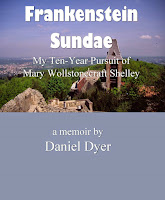• She told,
in her entry on Boccaccio, a story about his passion for a married woman. And
then this: That the lovers suffered great
misery, may serve as a warning as well as an example, of how such attachments,
from their very nature, from the separations, suspicions, and violations of delicacy
and ruth entailed upon them, must, under the most favourable auspices, be
fruitful of solitude and wretchedness.[1] I wonder how
Mary’s father reacted when he read this—from the daughter who had run away with
a married man in 1814. Well, I guess we can say, at best, that from experience
she had learned a few things. Solitude and wretchedness did follow—though not immediately—after her elopement, and she
writes about it continually in her journal and letters.
• In her
entry about Giambattista Marino (1569–1625), a Neapolitan poet, she relates a
tale about his estrangement from his father, who had not been exactly thrilled
about his son’s choice of profession: His
father, angry at his resistance to his wishes, was doubly indignant when he
gave open testimony of his new career, and actually published a volume of
poetry; he turned him from his house, and refused to supply him with the
necessaries of life.[2]
Mary could not have written a word of
that without thinking about her late husband, whose father, Sir Timothy
Shelley, behaved in exactly the same manner as Marino’s.
•
Occasionally in these entries Mary would wax philosophical about art, about
writing, about literature, about life itself. In her entry on Vittorio Alfieri
(1749–1803), an Italian poet and playwright, Mary paused to say this: Ignorance narrows the intellect, and takes
the living colours from the imagination.[3] Is
it too obvious to note how this resonates so jarringly in our own time?


No comments:
Post a Comment